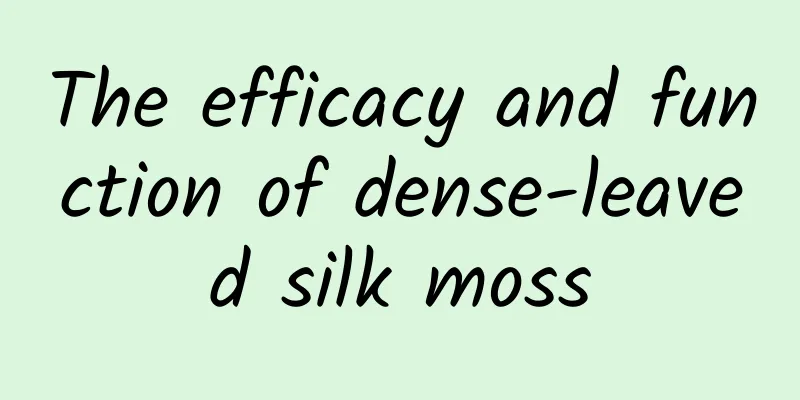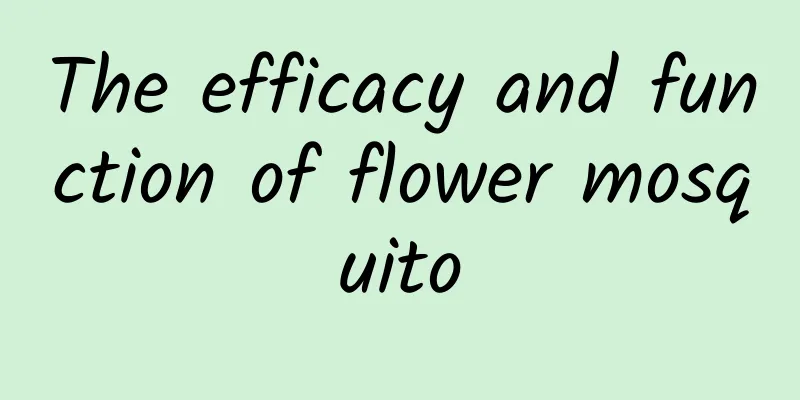What are the effects and functions of fossil grass

|
Fossil grass is slightly cold in nature, can clear away heat, help remove dampness from the human body, can reduce inflammation and detoxify, and has a diuretic and detoxifying effect. Fossil grass has the effect of treating stones, so it is called "fossil grass". Fossil grass has many effects. People with high blood pressure can use fossil grass to lower blood pressure. It is recommended to use the medicine with caution and be sure to take the medicine as prescribed by the doctor. What are the effects and functions of fossil grass? Let us learn about it below. 1. Fossil Grass Fossil grass can dissolve stones. Seventy percent of the human body is water. The quality of water is directly related to the health of the body. It can promote diuresis, relieve stranguria, and reduce swelling. Because it has the effect of treating various stones, it is suitable for people with kidney stones, bladder stones, urethral stones, and ureteral stones. It is mostly used to treat diseases of the urinary system. 2. Aliases Cat's whiskers, waist grass, kidney grass, kidney tea 3. Growth Environment It likes high temperature and its optimum temperature is 20-30℃. It is not restricted by soil type but will grow vigorously in loose and fertile soil. 4. Morphological characteristics Perennial herb. The stem is erect, 1-1.5 meters high, quadrangular, with shallow grooves and fine stripes, and covered with short soft hairs. The leaves are ovate, rhombus-ovate or ovate-oblong, (1.2)2-5.5cm long, (0.8)1.3-3.5cm wide, with an acute apex, a broad cuneate to truncate cuneate base, coarsely dentate or sparsely crenate on the margin, with small cusps at the ends of the teeth, papery, olive green above, gray-green below, pubescent on both sides and with scattered sunken glandular dots, sparser pubescence on the upper side, 4-5 pairs of lateral veins, obliquely ascending, slightly prominent on both sides; petiole (3)5-15mm long, flat on the abdomen and convex on the back, pubescent. The cyme has 6 flowers, forming a raceme with a peduncle 8-12 cm long at the top of the main stem and side branches; the bracts are round-ovate, about 3.5 mm long, about 3 mm wide, with a sharp tip, entire margin, parallel longitudinal veins, glabrous above, densely pubescent below, with small cilia on the edge; the pedicels are up to 5 mm long and densely pubescent along the axis of the order. The calyx is ovate, 5-6mm long and about 2.5mm wide, covered with fine soft hairs and protruding rusty glandular dots on the outside, glabrous on the inside, two-lipped, the upper lip is rounded, about 2.5mm long and wide, and the edge extends down to the calyx tube. The lower lip has 4 teeth, which are triangular and have awns at the tip. The first 2 teeth are twice as long as the lateral 2 teeth, and both have short eyelashes on the edges. When fruiting, the calyx enlarges, up to 1.1cm long and 5mm wide, with 10 obvious veins, among which the reticulated veins are clearly visible. The upper lip is obviously turned outward, and the lower lip extends forward. The corolla is light purple or white, pubescent on the outside, with sparse rusty glandular dots on the upper lip, and sparse pubescent on the inside at the lower part of the corolla tube. The corolla tube is narrowly tubular, 9-19mm long, nearly equal in size, and about 1mm in diameter. The corolla is large, two-lipped, with the upper lip large, outward-reflected, about 6mm in diameter, 3-lobed, the middle lobe larger, slightly emarginate at the apex, and the lower lip straight, oblong, about 5mm long, about 2.5mm wide, and slightly concave. There are 4 stamens, which extend 2-4cm beyond the corolla. The front pair are slightly longer. The filaments are long and filamentous, without teeth. The anthers are small and the anther cells are forked. The style is long and protruding, with a club-shaped tip and 2 shallow lobes. The front of the disk is finger-like inflated. The nutlets are oval, about 2 mm long and 1.6 mm wide, dark brown and wrinkled. Flowering and fruiting period is from May to November. 5. Main Value Medicinal plants, the medicinal parts are leaves, stems or whole plants. It is slightly cold in nature, sweet and slightly bitter in taste, and has the effects of clearing away heat and dampness, and relieving inflammation and detoxification. It has a diuretic effect. Because it can treat various stones, it is called fossil grass. It is mostly used to treat diseases of the urinary system. It also has the effect of lowering blood pressure. It is mainly used to treat various stones, nephritis, hepatitis, cystitis, and hypertension. It is used externally to treat swelling, sores, and dermatitis. Due to its strong medicinal properties, it must be prescribed by a doctor and used with caution. It is contraindicated for pregnant women and people with weak bladders. It must be used with caution. |
<<: What are the effects and functions of processed tangerine peel?
>>: Is Astragalus effective in removing freckles?
Recommend
Out of control body - Is "obsessive compulsive disorder" really a disease? How to deal with obsessive compulsive disorder?
Author: Xu Wei, Zhongda Hospital Affiliated to So...
Chinese patent medicine for relieving liver fire
Chinese patent medicine is a medicine made from t...
What are the Aconitum medicinal materials?
Aconitum-type medicinal materials mainly contain ...
Can tobacco stop bleeding?
We also know that there are often some unexpected...
What exactly is Mercury retrograde?
You often see this kind of statement on the Inter...
Is it better to put food in the refrigerator when it is cold, or to put it in the refrigerator while it is hot? Here is the answer
Expert of this article: Dou Pan, deputy director ...
The efficacy and function of chamomile
Chamomile belongs to the Asteraceae family. It ca...
The efficacy and function of Usnea
Usnea mainly has the function of clearing the liv...
Chuanbei can cure bronchitis
The health of our lungs often affects the conditi...
Today is the beginning of the dog days. Why do the dog days sometimes last 30 days and sometimes 40 days?
"It is the dog days of summer, and the weath...
The efficacy and function of Hosta root
Everyone is familiar with the root of the hosta p...
The efficacy and function of shrimp
The environment is now seriously deteriorating an...
What are the effects of Poria powder
Poria powder refers to the powder of Poria cocos....









